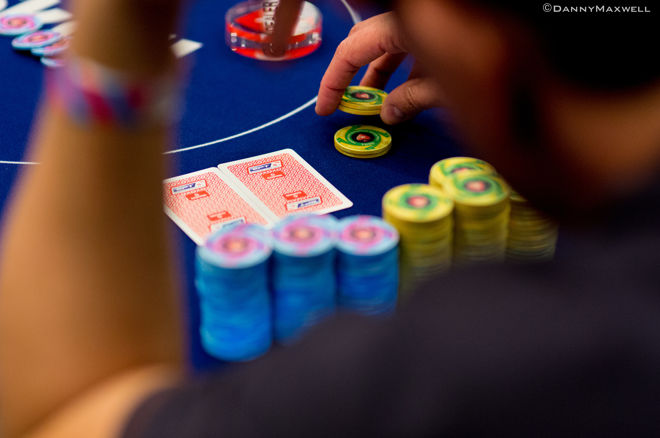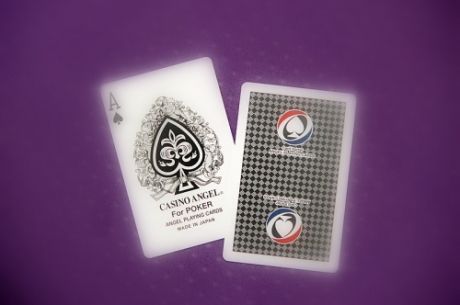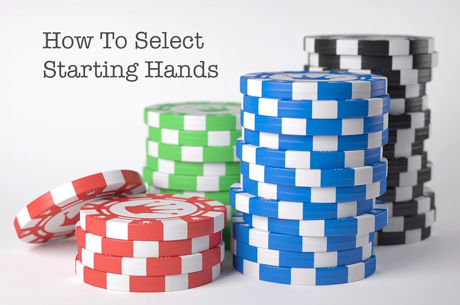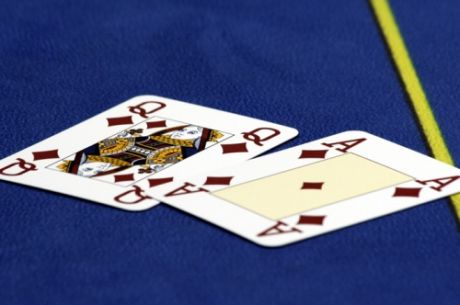10 More Hold'em Tips: Playing Weak Aces

For newer no-limit hold'em players �� and those with experience, too �� "weak aces" are among the most trouble-causing starting hands to play. By "weak aces" we're referring primarily to Ax9x through Ax2x, although you might even include ace-ten in the category. Sometimes these poker hands are described as "ace-rag" as well.
Non-suited weak aces are obviously less attractive starting hands to play than suited aces, although you shouldn't necessarily get overly excited about being dealt hands like A?6? or A?3?. Whether playing live or online poker, you often encounter players overvaluing weak ace hands, and frequently paying the price as a result.
The Challenge to Flop Well with Weak Aces
To begin, there just aren't that many favorable flops when you hold weak aces.
Flopping two pair is always nice, including when you have weak aces. But the chances of pairing both of your hole cards are quite slim �� 49-to-1. You also need an opponent to catch a piece of such a flop in order to get action on such a hand.
Flopping any sort of straight draw with weak aces isn't necessarily great, either. A straight draw using your ace will necessarily be a gutshot draw, and one using your kicker (e.g., you hold Ax6x and the flop comes 9x8x7x) could be vulnerable to draws to higher straights and/or made straights.
Meanwhile if your weak aces are suited you're only a little worse than 8-to-1 to flop a flush draw �� often a best-case scenario when holding a hand like A?4?. Of course, flopping a flush is an extreme longshot �� 118-to-1 �� and even those rare times when you do, it's often hard to get action on single-suited boards versus players who necessarily cannot have the nuts.
All of which is to say, relatively speaking, while having an ace in your hand (even with a poor kicker) might look nice before the flop, there are actually very few flops that are unequivocally good for you with such hands. That fact should dictate how you approach playing weak aces both before and after the flop.
Playing Weak Aces Preflop
You often will want to ditch weak aces preflop when opening the action from early position. Raising from under the gun with A?8? and then getting called by players who will act after you postflop is an awkward spot you can easily avoid by folding.
You will often also want to fold weak aces preflop when facing a raise. An exception might be when playing from the cutoff or button and getting dealt weak suited aces like A?4? or A?7?, especially if the stacks are deep enough to give you good implied odds should you flop that flush draw or make a flush by the turn or river. The strategy here is not unlike that employed when set mining.
Calling preflop raises from the blinds with weak aces, even when they are suited, usually isn't as preferable since you won't have position postflop. Depending on stack sizes, the amount of the raise, and the number of players in the hand, however, you could still make that call with a plan to abandon the hand should you fail to flop that flush draw.
Playing Weak Aces Postflop
Being able to get away from weak aces is part of the problem these "trouble hands" pose, though. Say you do call a raise from the small blind with A?3? and the flop brings an ace. Many players find it hard to let go of a top-pair hand after the flop, even when an opponent's actions strongly point to that hand being second-best.
If you hold A?3? and a flop comes A?J?8?, sure, you have top pair. But if anyone else shows interest with a bet, raise, or even a call of your bet, you can't be too enthused about your hand. Indeed, rather than trying to build a pot you'll likely be thinking about pot control, minimizing losses, or perhaps even tossing the hand if the heat increases on the turn or river (all of which is harder to manage when out of position).
The same goes for pairing your kicker �� say, with A?7? on a K?J?7? flop. Rarely will you be making top pair with cards nine or lower, meaning you've got at best a medium-strength hand that might be good at showdown, but isn't worth pouring lots of chips in behind.
Caution is the word, then, the further into a hand you go with weak aces. Don't expect to win many big pots with them, and try to avoid situations where you can lose a lot of chips.
When Can You Play Weak Aces?
While avoiding weak aces altogether is not a bad rule of thumb, especially for newer players, there are a couple of situations when weak aces become more attractive to play. For both, think "short" �� as in short-stacked and short-handed.
When short-stacked in a tournament �� and we mean severely short-stacked and in the danger zone (down to 5-6 big blinds or thereabouts) �� open-pushing with a weak-ace hand is usually not a bad decision to make.
If you're called, you'll at least be a slight favorite against any unpaired hand not containing an ace. In fact, you'll have at least some equity against any hand other than pocket aces (against which you'll be toast). For example, A?6? has 28% equity versus K?K?, nearly 27% versus A?J?, and so on.
What you don't want to do with weak aces when your stack is low in a tournament is either to call a raise or reraise. As in any short-stacked tournament scenario, you want to add fold equity, too, when committing those last chips. After all, if you can shove your A?4? and get it through to win the blinds and antes, that's much preferable to having to sweat five community cards against what will likely be a better hand. Calling off your stack with such a hand or reraising all in against someone who has already raised is almost a guarantee you'll be an underdog to survive.
Weak aces also become marginally more attractive in short-handed no-limit hold'em games (i.e., six-handed or less), and even more so in heads-up situations. They remain vulnerable, of course, but with fewer opponents to deal with the chances of another player being dealt an ace with a better kicker go down a bit when you choose to play your ace-rag.
Speaking of heads-up situations, the blind-versus-blind scenario that sometimes arises in no-limit hold'em is another spot where weak aces become more attractive to play. If it folds around to you in the small blind and you look down at A?5?, odds are your starting hand is better than your lone opponent's, which should provide encouragement to play the hand. (And raise it �� don't just limp in and let your opponent see a free flop with position.)
Also in this series...
- Game Selection
- Making the Squeeze Play
- The Stop-and-Go
- The Float Play
- Should You Ever Limp-Reraise?
- Stealing and Restealing
- Overbetting
- Light Three-Betting and Four-Betting
- Understanding Expected Value
Ready to take a seat at the table? Put these hold'em tips into practice at partypoker.
Want to stay atop all the latest in the poker world? If so, make sure to get PokerNews updates on your social media outlets. Follow us on Twitter and find us on both Facebook and Google+!
In this Series
- 1 10 More Hold'em Tips: Game Selection
- 2 10 More Hold'em Tips: Playing Weak Aces
- 3 10 More Hold'em Tips: Making the Squeeze Play
- 4 10 More Hold'em Tips: The Stop-and-Go
- 5 10 More Hold'em Tips: The Float Play
- 6 10 More Hold'em Tips: Should You Ever Limp-Reraise?
- 7 10 More Hold'em Tips: Stealing and Restealing
- 8 10 More Hold'em Tips: Overbetting
- 9 10 More Hold'em Tips: Light Three-Betting and Four-Betting
- 10 10 More Hold'em Tips: Understanding Expected Value









